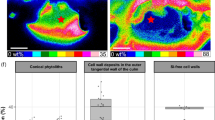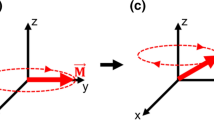Abstract
In order to monitor lead pollution from urban areas to coral reefs in the Gulf of Thailand, linear and two-dimensional distributions of Pb in corals from Khang Khao Island, Thailand and Rukan-sho, Okinawa, were analysed with high resolution. Laser ablation inductively coupled plasma mass spectrometry was applied to measure Pb content in coral skeletons using synthetic Pb standards in a CaCO3 matrix as calibration materials. Linear and two-dimensional ablation schemes were applied to determine the Pb content in corals collected from Khang Khao Island, Thailand and Rukan-sho, Okinawa. The coral skeleton was ablated by Nd:YAG laser (wavelength of 266 nm, beam diameter of 155 µm, scanning speed of 10 µm s−1 and frequency of 10 Hz) along the growth axis, and ion counts for 208Pb were normalised to 42Ca. Lead content in the corals was determined using a calibration curve obtained from the synthetic Pb standards (0–141 µg g−1). The linear ablation track of the sample from Khang Khao showed over 30 peaks of Pb with an average value of 3.55 µg g−1, while Pb content in the coral from Rukan-sho showed relatively small variation with an average value of 0.132 µg g−1. Two-dimensional imaging of Pb in the coral skeletons was also carried out for an area of 7 × 20 mm on the sample from Khang Khao. The distribution patterns of Pb and Ba in the Thailand coral co-varied. These observations from the linear and imaging analyses suggest discontinuous inputs of anthropogenic Pb from rivers to the Gulf of Thailand.






Similar content being viewed by others
References
Alibert, C., Kinsley, L. P. J., Fallon, S. J., McCulloch, M. T., Berkelmans, R., & McAllister, F. (2003). Source of trace element variability in Great Barrier Reef corals affected by the Burdekin flood plumes. Geochimica et Cosmochimica Acta, 67, 231–246.
Al-Rousan, S. A., Shioul, R. N., Al-Horani, F. A., & Abu-Hilal, A. H. (2007). Heavy metal contents in growth bands of Porites corals: record of anthropogenic and human developments from the Jordanian Gulf of Aqaba. Marine Pollution Bulletin, 12, 1912–1922.
Barats, A., Pécheyran, C., Amouroux, D., Dubascoux, S., Chauvaud, L., & Donard, O. F. X. (2007). Matrix-matched quantitative analysis of trace-elements in calcium carbonate shells by laser-ablation ICP–MS: application to the determination of daily scale profiles in scallop shell (Pecten maximus). Analytical and Bioanalytical Chemistry, 387, 1131–1140.
Belloto, V. R., & Mikeley, N. (2000). Improvements in calibration procedures for the quantitative determination of trace elements in carbonate material (mussel shells) by laser ablation ICP-MS. Fresenius' Journal of Analytical Chemistry, 367, 635–640.
Boutron, C. F., Görlach, U., Candelone, J. P., Bolshov, M. A., & Delmas, R. J. (1991). Decrease in anthropogenic lead, cadmium and zinc in Greenland snows since the late 1960s. Nature, 353, 153–156.
Dodge, R. E., & Gilbert, T. R. (1984). Chronology of lead pollution contained in banded coral skeletons. Marine Biology, 82, 9–13.
Fallon, S. J., McCulloch, M. T., van Woesik, R., & Sinclair, D. J. (1999). Corals at their latitudinal limits: laser ablation trace element systematics in Porites from Shirigai Bay, Japan. Earth and Planetary Science Letters, 172, 221–238.
Halliday, A. N., Lee, D. C., Christensen, J. N., Rehkamper, M., Yi, W., Luo, X. Z., et al. (1998). Applications of multiple collector-ICPMS to cosmochemistry, geochemistry, and paleoceanography. Geochimica et Cosmochimica Acta, 62, 919–940.
Hirao, Y., Mabuchi, H., Fukuda, E., Tanaka, H., Imamura, T., Todoroki, H., et al. (1986). Lead isotope ratios in Tokyo Bay sediments and their implications in the lead consumption of Japanese industries. Geochemical Journal, 20, 1–15.
Hossain, M. S., Ohde, S., Tanaka, K., Sirirattanachai, S., & Snidbongs, A. (2008). Oxygen isotopic composition of Porites coral from the Northern Gulf of Thailand: an implication for its skeletal growth. Bulletin of the Society of Sea Water Science, Japan, 62, 112–114.
Ichikuni, M. (1979). Uptake of fluoride by aragonite. Chemical Geology, 27, 207–214.
Inoue, M., Hata, A., Suzuki, A., Nohara, M., Shikazono, N., Yim, W. W. S., et al. (2006). Distribution and temporal changes of lead in the surface seawater in the western Pacific and adjacent seas derived from coral skeletons. Environmental Pollution, 144, 1045–1052.
Lea, D. W., Shen, G. T., & Boyle, E. A. (1989). Coralline barium records temporal variability in equatorial Pacific upwelling. Nature, 340, 373–376.
Marcantonio, F., Zimmerman, A., Xu, Y., & Canuel, E. (2002). A Pb isotope record of mid-Atlantic US atmospheric Pb emissions in Chesapeake Bay sediments. Marine Chemistry, 77, 123–132.
McCulloch, M. T., Fallon, S. J., Wyndham, T., Hendy, E. J., Lough, J. M., & Barnes, D. J. (2003). Coral record of increased sediment flux to the inner Great Barrier Reef since European settlement. Nature, 421, 727–730.
Mukai, H., Furuta, N., Fujii, T., Ambe, Y., Sakamoto, K., & Hashimoto, Y. (1993). Characterization of sources of lead in the urban air of Asia using ratios of stable lead isotopes. Environmental Science and Technology, 27, 1347–1356.
Murozumi, M., Chow, T. J., & Patterson, C. C. (1969). Chemical concentrations of pollutant aerosols, terrestrial dusts and sea salts in Greenland and Antarctic snow strata. Geochimica et Cosmochimica Acta, 33, 1247–1294.
Nozaki, Y., Yamamoto, Y., Manaka, T., Amakawa, H., & Snidvongs, A. (2001). Dissolved barium and radium isotopes in the Chao Phraya River estuarine mixing zone in Thailand. Continental Shelf Research, 21, 1435–1448.
Nriagu, J. O. (1998). Tales told in lead. Science, 281, 1622–1623.
Shen, G. T., & Boyle, E. A. (1987). Lead in corals: reconstruction of historical industrial fluxes to the surface ocean. Earth and Planetary Science Letters, 82, 289–304.
Shotyk, W., Weiss, D., Appleby, P. G., Cheburkin, A. K., Frei, R., Gloor, M., et al. (1998). History of atmospheric lead deposition since 12, 370 C-14 yr BP from a peat bog, Jura Mountains, Switzerland. Science, 281, 1635–1640.
Sinclair, D. J. (2005). Non-river flood barium signals in the skeletons of corals from coastal Queensland, Australia. Earth and Planetary Science Letters, 237, 354–369.
Sinclair, D., Kinsley, L. P., & McCulloch, M. T. (1998). High resolution analysis of trace elements in corals by laser ablation ICP-MS. Geochimica et Cosmochimica Acta, 62, 1889–1901.
Wyndham, T., McCulloch, M., Fallon, S., & Alibert, C. (2004). High-resolution coral records of rare earth elements in coastal seawater: Biogeochemical cycling and a new environmental proxy. Geochimica et Cosmochimica Acta, 68, 2067–2080.
Zacherl, D. C., Paradis, G., & Lea, D. W. (2003). Barium and strontium uptake into larval protoconchs and statoliths of the marine neogastropod Kelletia kelletii. Geochimica et Cosmochimica Acta, 67, 4091–4099.
Acknowledgments
We thank S. Sirirattanachai and T. Ono for coral sampling in Thailand and Okinawa, and R. Bogan for critical reading the manuscript. We are grateful to an anonymous reviewer for the valuable comments on the manuscript. This paper was completed as an exchange programme between the University of Sheffield and the University of the Ryukyus. This work was supported by the Japanese Ministry of Education and Science through JSPS (No. 20510027), the Ryukyu Daigaku Foundation and the University of Sheffield.
Author information
Authors and Affiliations
Corresponding author
Rights and permissions
About this article
Cite this article
Tanaka, K., Ohde, S., Sakaguchi, A. et al. Pb/Ca in Thailand Coral Determined by LA-ICP-MS: Anthropogenic Pb Input of River Run-off into a Coral Reef from Urbanised Areas. Water Air Soil Pollut 211, 211–218 (2010). https://doi.org/10.1007/s11270-009-0293-4
Received:
Accepted:
Published:
Issue Date:
DOI: https://doi.org/10.1007/s11270-009-0293-4




